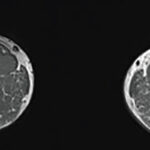
VasutinSergey / shutterstock.com
CHICAGO—In the Thieves Market session at the 2018 ACR/ARHP Annual Meeting, rheumatologists from around the country presented a slate of challenging cases that emphasized the importance of clinical persistence and attention to detail, and the need to consider diagnoses that might not be common or obvious. Three of them are summarized below. (Look for more information on these interesting cases in coming issues.)
Case 1
Sonam Kiwalkar, MD, a fellow at Oregon Health & Science University, Portland, presented the case of a 30-year-old woman who arrived at University Hospital with headaches, a worsening skin rash, low-grade fevers and arthralgias that had persisted over the past three months or so. A few months before, she had fatigue and a rash, and was seen in an emergency department. She was referred to a dermatologist for a biopsy, but she did not follow up. About two weeks later, she was admitted to an outside hospital for fevers, headaches and confusion, and treated empirically for bacterial meningitis.
Four years previously, the woman was diagnosed with lepromatous leprosy, but was non-compliant with her medications. She had no history of rheumatic diseases. She had emigrated from Micronesia in 2004.
On physical exam, she had a low-grade fever, splenomegaly, diffuse non-pitting edema of her arms and legs, synovitis and extreme tenderness of her wrist, metacarpophalangeal and proximal interphalangeal joints. She had oval macules of 1–2 cm with a red border, and a new rash that was erythematous and warm, with very tender subcutaneous nodules on her legs.
She had a leukopenia, normocytic hypochromic anemia and thrombocytopenia; a high erythrocyte sedimentation rate and C-reactive protein; a spot urine protein to creatine ratio consistent with 2 gm proteinuria; positive anti-nuclear antibody, ribonucleoprotein particle, double-stranded DNA and SSA tests; and low C3 and C4.
She was diagnosed with erythema nodosum leprosum (ENL), an immune-mediated leprosy reaction.
This diagnosis, Dr. Kiwalkar said, was favored over lupus because the woman had pancytopenia with a bone marrow biopsy showing of Mycobacterium leprae and the characteristic skin rash of ENL, which showed splenomegaly and the classic pattern on an acid-fast bacilli stain that indicates the presence of bacilli that cause leprosy.
Because ENL is also an immune-driven disease, it is hard to say whether the nephritis, arthritis and serologies were from ENL, lupus or both. Applying Occam’s razor, ENL required less speculation, so the patient received the ENL diagnosis.
ENL, which requires a trigger, might have been sparked by the bacterial meningitis. “ENL can cause autoantibody formation that can mimic our autoimmune diseases,” Dr. Kiwalkar said.
The patient was started on high-dose corticosteroids with initial fast improvement, and cyclosporine was added as a second-line agent, with M. leprae treatment. After a few weeks, she was doing better overall, but her dsDNA and complement had not normalized, Dr. Kiwalkar said. The patient was later lost to follow-up.
She said there was still some question about whether the patient might have also had lupus.
“As the case unfolds, I think it will be a combination of both,” she said. “There are some case reports of ENL triggered by an infection and presenting with a similar clinical picture, and there are some reports of leprosy triggering lupus. The entire case is quite mystifying and only time will tell.”
Case 2
Paras Karmacharya, MBBS, a rheumatology fellow at Mayo Clinic in Rochester, Minn., presented a case involving a 55-year-old man with metastatic melanoma on checkpoint-inhibitor therapy (nivolumab) who had had worsening proximal muscle weakness over seven weeks, with drooping eyelids, disturbances to his vision, fatigue and weight loss.
He was taking prednisone, along with vitamin D3, omeprazole and temezepam. The main lab finding was elevated muscle enzymes. He had streaky intramuscular edema on magnetic resonance imaging (MRI), and diffuse myopathy that most severely affected his bulbar, axial and proximal upper limb muscles on electromyography. A muscle biopsy suggested necrotizing myopathy.
The diagnosis? PD-1 inhibitor-associated necrotizing myopathy.
“One salient feature that distinguishes this is the ocular muscle involvement seen in this case,” said Dr. Karmacharya.
The patient’s nivolumab was discontinued. He was started on methylprednisone, but he developed persistent dysphagia and was switched to intravenous immunoglobulin therapy. After that, his symptoms improved.
Neuromuscular complications due to checkpoint inhibitor treatment are rare, but can prove life-threatening. Prompt recognition and treatment can help outcomes, but Dr. Karmacharya also said the “long-term outcome for this rare manifestation is unknown, and it is unclear if [patients] require a steroid-sparing agent.”
Case 3
Priyanka Iyer, MBBS, MPH, a rheumatology fellow at the University of Iowa, Iowa City, presented the case of a 53-year-old man who had undergone a liver transplant for alcoholic cirrhosis and was treated with cyclosporine and acetaminophen. He presented with bilateral knee effusion, pleural weakness and myalgias.
His labs revealed signs of anemia, an elevated erythrocyte sedimentation rate, and bone-specific alkaline phosphatase. An MRI showed small, bilateral knee effusion and bone marrow edema. A bone scan was notable for symmetric uptake in both knees and both ankles.
“Inflammatory arthritis was on top of our list,” Dr. Iyer said. “This is what we see most commonly in the clinic. But his presentation was somewhat odd.” He had severe pain but didn’t have many signs of inflammation, she said.
One by one, clinicians ruled out septic arthritis, myositis, avascular necrosis and other potential diagnoses. Then, she said, clinicians thought about his symptom timeline.
“We wondered if something we [did] post-transplant could be the cause of his complaints,” she said. Based on his elevated bone-specific alkaline phosphatase level, abnormal MRI and bone scan, they settled on a diagnosis of calcineurin inhibitor pain syndrome.
Cyclosporine and tacrolimus are the most common culprits, with symmetric lower extremity arthralgias (and sometimes long bone pain) as important signals. The pain is brought on by the calcineurin inhibitor when the drug causes vascular changes, leading to disturbance of bone perfusion and permeability, intraosseous vasoconstriction, bone marrow edema and pain. Consider calcium channel blockers as an adjunct treatment, Dr. Iyer said.
In this case, the transplant team tried alternate therapies such as mycophenolate mofetil and sirolimus, but the patient didn’t tolerate them well. He was therefore restarted on a lower dose of cyclosporine with careful drug trough monitoring, with nifedipine and pregabalin finally added. The man’s symptoms improved, but it took months, Dr. Iyer said.
Although calcineurin inhibitor pain syndrome is rare, it is important to be aware of it. “It may affect up to one in 20 patients on calcineurin inhibitors,” Dr. Iyer said.
Thomas R. Collins is a freelance writer living in South Florida.

